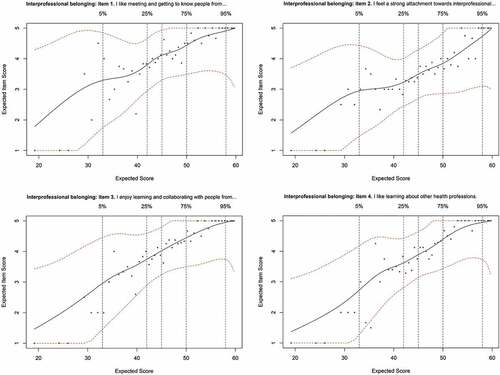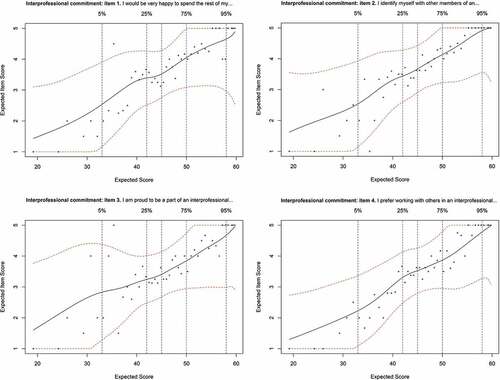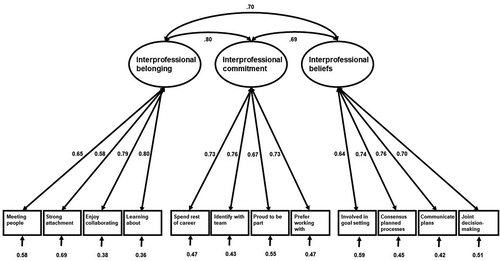Figures & data
Figure 1. Study design describing five developmental stages of the Extended Professional Identity Scale (EPIS) based on scale development research (Worthington & Whittaker, Citation2006).

Figure 2. Flowchart of item selection and scale analysis with a predetermined number of 12 items for the final version of the Extended Professional Identity Scale (EPIS).

Figure 3. Interprofessional identity as a superordinate social identity of professional identity with three interrelated characteristics.

Table 1. Preselection based on consensus between two independent assessors (an IPE-lecturer and organizational psychologist and a dental student with IPE experience) of 35 items attributed to belonging, commitment and beliefs; sometimes adapted to the interprofessional context.
Table 2. Shortening scale length by using EFA on 24 items (n = 97) as selected beforehand by five professionals (physician, nurse, dietitian, dental hygienist, and social worker) based on relevance (face validity) to three subscales.
Table 3. Polychoric and polyserial inter item correlations for each of the three subscales of the 12-item Extended Professional Identity Scale (EPIS; n = 200).
Figure 4. IRT plots of expected item scores related to expected scores of interprofessional belonging items (n = 200).

Figure 5. IRT plots of expected item scores related to expected scores of interprofessional commitment items (n = 200).

Figure 6. IRT plots of expected item scores related to expected scores of interprofessional beliefs items (n = 200).

Figure 7. Three-factor model of the Extended Professional Identity Scale (EPIS) with standardized path coefficients.

